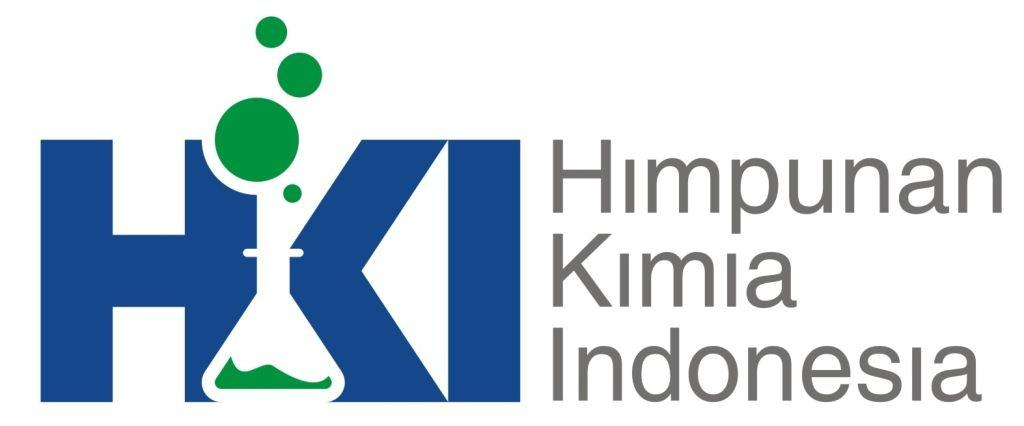Kemudahan Biodegradasi Selulosa Bakteri dari Limbah Cucian Beras dengan Penambahan Gliserol, Kitosan, dan Nanopartikel Perak
Abstract
The objectives of this research were to study the effect of glycerol and chitosan addition toward biodegradability of cellulose based rice waste water, the effect of biodegradation time toward mass lost and biodegradability, and determine functional group and crystalinity of the highest biodegradability composite. Bacterial celluloses were prepared from 100 mL rice waste water that fermented by Acetobacter xylinum for 7 days with addition of glycerol (for Cellulose-Glycerol and Cellulose-Glycerol-Chitosan). Then, bacterial celluloses were immersed in chitosan solution (for Cellulose-Chitosan and Cellulose-Glycerol-Chitosan). The water in bacterial cellulose and its composites was removed by heating, then deposited silver nanoparticle on the bacterial cellulose and its composite. The silver nanoparticles were prepared by chemical reduction with using AgNO3 solution, trisodium citric as reducing agent, and gelatin as stabilizer. The silver nanoparticle was deposited into bacterial cellulose and its composites film by immersing method. After that, the bacterial cellulose and its composites were biodegradated by soil burrial test method for 14 days. Then, cellulose with the highest biodegradability was characterized by ATR-FTIR and XRD. The silver nanoparticle formation was showed by UV-Vis spectrum with peak in the 418.8 nm area. The glycerol addition can increase biodegradability, whereas the chitosan addition can decrease biodegradability. The increasing of biodegradation time, mass lost increased but the biodegradability decreased. After biodegradation, intensity of pyran cyclic in cellulose-glycerol which is deposited Ag (SG + Ag) decreased, but crystallinity of it increased.
Keywords : Biodegradation, glycerol, chitosan, silver nanoparticle, bacterial cellulose.
DOI: http://dx.doi.org/10.15408/jkv.v2i1.3111
Keywords
References
Agustri AA. 2012. Preparasi dan karakterisasi bioplastik dari air cucian beras dengan penambahan kitosan. Skripsi, Universitas Negeri Yogyakarta.
Anindyawati T. 2010. Potensi selulase dalam mendegradasi lignoselulosa limbah pertanian untuk pupuk organik. Berita Selulosa. 45(2): 70-77.
Bielecki S. 2002. Bacterial Cellulose. Biopolymers: Polysaccharides. 5(1): 37-90.
Chawla PR, Bajaj IB, Survase SA, Singhal RD. 2009. Microbial Cellulose: fermentative Production and Applications. Biotechnol. 47 (2): 107-124.
Christy AJ, Umadevi M. 2012. Synthesis and Characterization of Monodispersed Silver Nanoparticles. M. IOP Publishing. Adv. Nat. Sci.: Nanosci. Nanotechnol. 3
Chulifah U. 2010. Biodegradasi bioplastik nata de leri menggunakan lumpur aktif. Laporan Penelitian. Universitas Negeri Yogyakarta.
Flieger M, Kantrova A, Prell T. 2003. Biodegradable plastics from renewable sources. Journal of Folia Microbiologics. 48: 22-44.
Handiyanto S, Hastuti US, Prabaningtyas S. 2012. Kajian penggunaan air cucian beras sebagai bahan media pertumbuhan biakan murni jamur tiram putih (Pleurotusostreatus var. Florida). Laporan Penelitian. Universitas Negeri Malang.
Khairiah E, Khotimah S, Mulyadi A. 2013. Karakterisasi dan kepadatan bakteri pendegradasi selulosa pada tanah gambut di desa parit banjar kabupaten Pontianak. Jurnal Protobiont. 2(2): 87-92.
Mutia T, Eriningsih R, Safitri R. 2011. Membran alginat sebagai pembalut luka primer dan media penyampaian obat topikal untuk luka yang terinfeksi. Jurnal Riset Industri. V(2): 161-174.
Nugraha R. 2006. Produksi enzim selulase oleh Penicillium nalgiovense SS240 pada Substrat Tandan Sawit. Skripsi, Institut Pertanian Bogor.
Pardosi D. 2008. Pembuatan material selulosa bakteri dalam medium air kelapa melalui penambahan sukrosa, kitosan, dan gliserol menggunakan Acetobacter xylinum. Tesis, Universitas Sumatera Utara.
Prabhu S, Poulose EK. 2012. Silver Nanoparticles: mechanism of antimicrobial action. synthesis, medical applications, and toxicity effects. International Nano Letters Springer Open Journal. 2(32): 1-10.
Rohaeti E, Widjajanti E, LFX, Rachmawati E. 2014. Silver nanoparticle impregnated on the composite of bacterial cellulose-chitosan-gliycerol as antibacterial material. Proceeding of International Conference On Research Implementation and Education of Mathematic and Sciences. C-6: 43-53.
Rohaeti E, Pratomo H. 2011. Bioplastik nata de casava sebagai bahan edible film ramah lingkungan. Jurnal Penelitian Saintek. 16(2): 172-190.
Rohaeti E, Rahayu T. 2012. Pengembangan biomaterial selulosa bakteri dari limbah rumah tangga dengan penambahan kitosan dan pemlastis sebagai material penutup luka. Laporan Penelitian. Universitas Negeri Yogyakarta.
Rohaeti E. 2009. Karakterisasi biodegradasi polimer. Prosiding Seminar Nasional Penelitian, Pendidikan, dan Penerapan MIPA.
Sanjaya I, GMH, Puspita T. 2010. Pengaruh penambahan gliserol khitosan dan plasticizer gliserol pada karakteristik plastik biodegradable dari pati limbah singkong. Laporan Penelitian. Institut Teknologi Surabaya.
Saputra AH, Haryono A, Laksmono JA, Anshari MH. 2011. Preparasi koloid nanosilver dengan berbagai jenis reduktor sebagai bahan anti bakteri. Jurnal Sains Materi Indonesia. 12(3): 202-208.
Senam, Rohaeti E, Sutrisno H, Rakhmawati A. 2012. Aplikasi nanopartikel perak pada komposit selulosa-bakteri kitosan sebagai antibakteri untuk keperluan biomedis. Laporan Penelitian. Universitas Negeri Yogyakarta.
Susakti A. 2014. Tingginya Konsumsi Beras di Indonesia. Diakses dari “http://bbp2tp.litbang.pertanian.go.id” pada tanggal 7 November 2014 pukul 20.49 WIB.
Tareq A, Alam M, Raza S, Sarvar T, Fardous Z, Chowdhury AZ, Hossain S. 2013. Comparative study of antibacterial activity of chitin and chemically treated chitosan prepared from shrimp (Macrobrachium Rosenbergii) shell waste. Journal of Virology and Microbiology. 1-9.
Torres FG, Commeaux S, Troncoso OP. 2012. Biocompatibility of bacterial cellulose based biomaterial. Journal of Finctional Biomaterials. 3: 864-878.
Wardhani RAK, Rudyardjo DI, Supardi A. 2014. sintesis dan karakterisasi bioselulosa-kitosan dengan penambahan gliserol sebagai Plasticizer. Laporan Penelitian. Universitas Airlangga.
Zhang S, Luo J. 2011. Preparation and properties of bacterial cellulose/alginate blend bio-fibers. Journal of Engineered Fibers and Fabrics. 6(3): 69-73.
DOI: 10.15408/jkv.v2i1.3083
Refbacks
- There are currently no refbacks.
Copyright (c) 2019 Eli Rohaeti, Endang Widjajanti Laksono FX, Anna Rakhmawati

This work is licensed under a Creative Commons Attribution-ShareAlike 4.0 International License.

